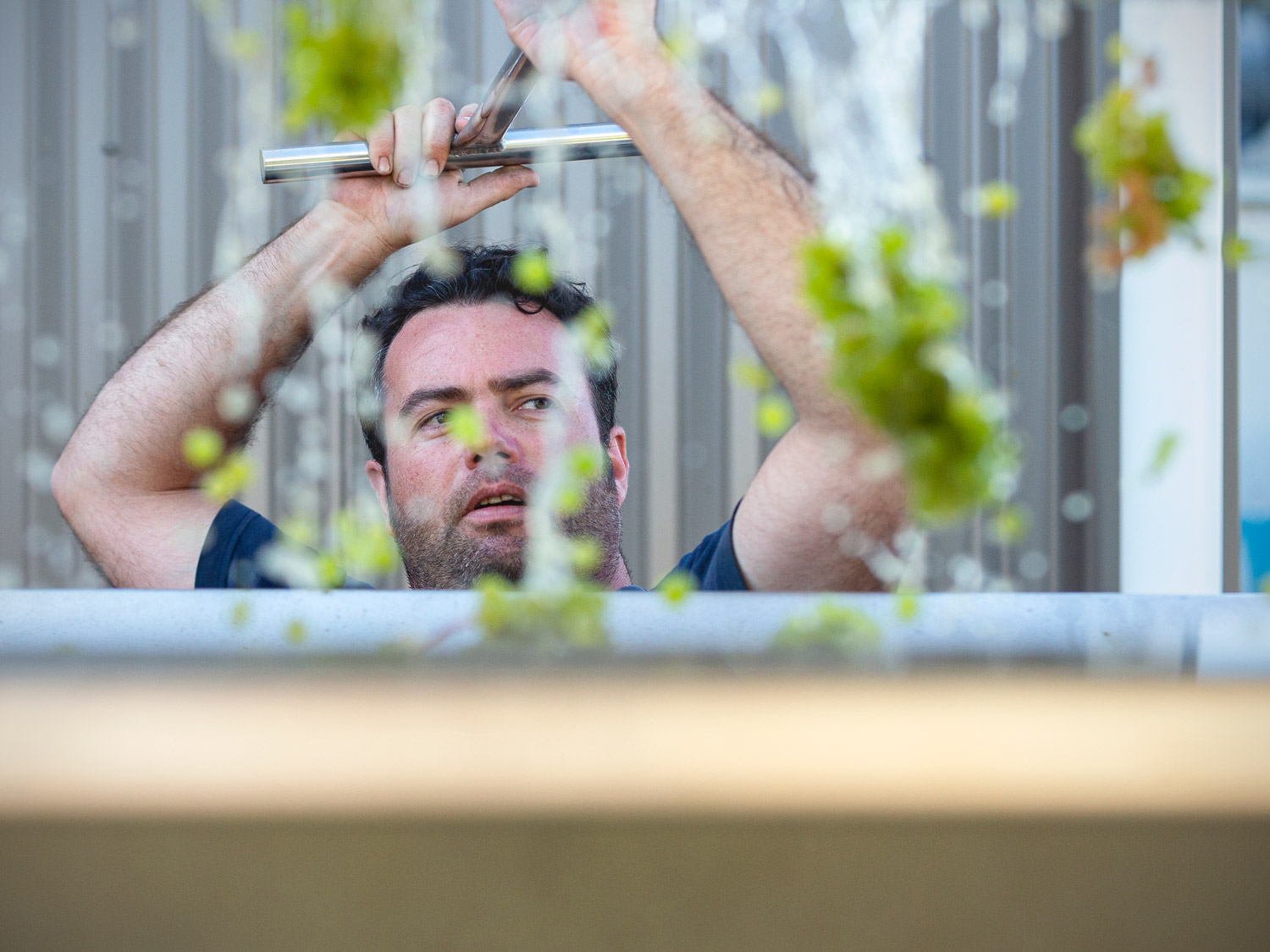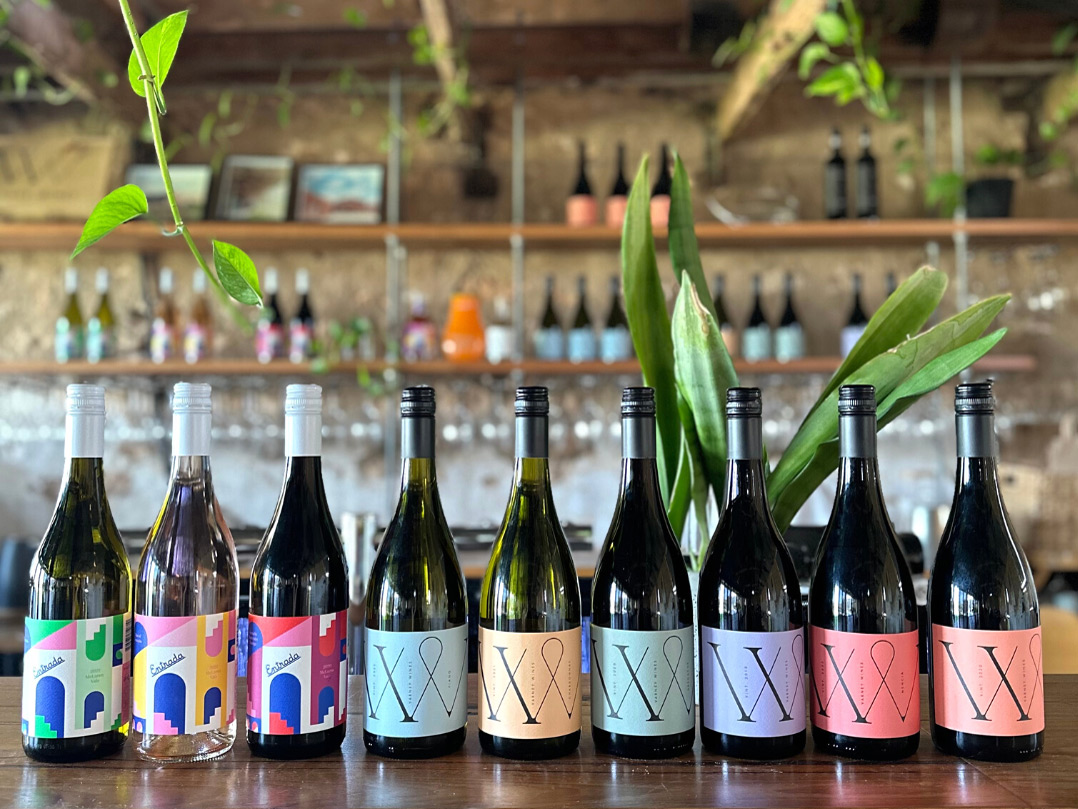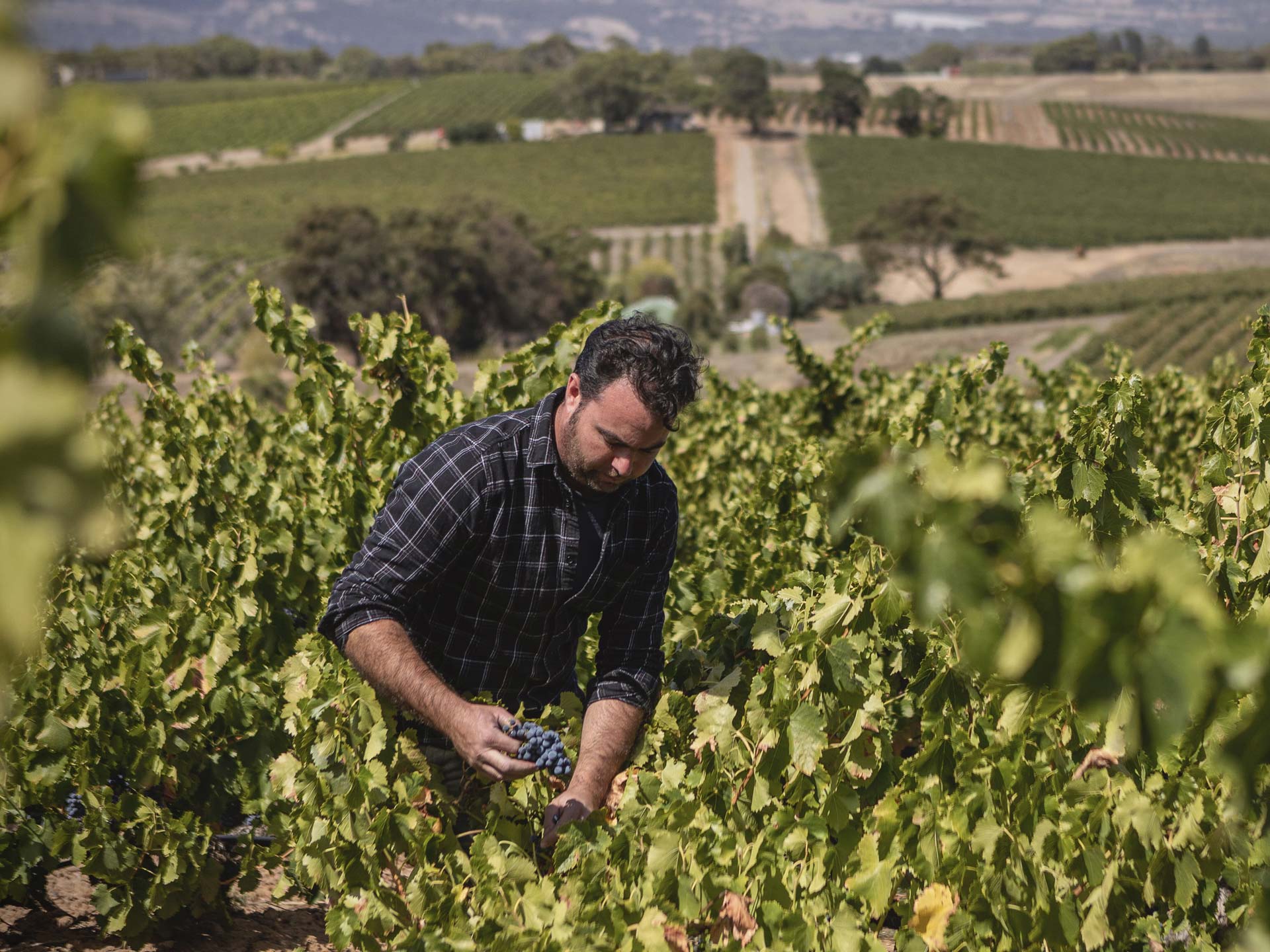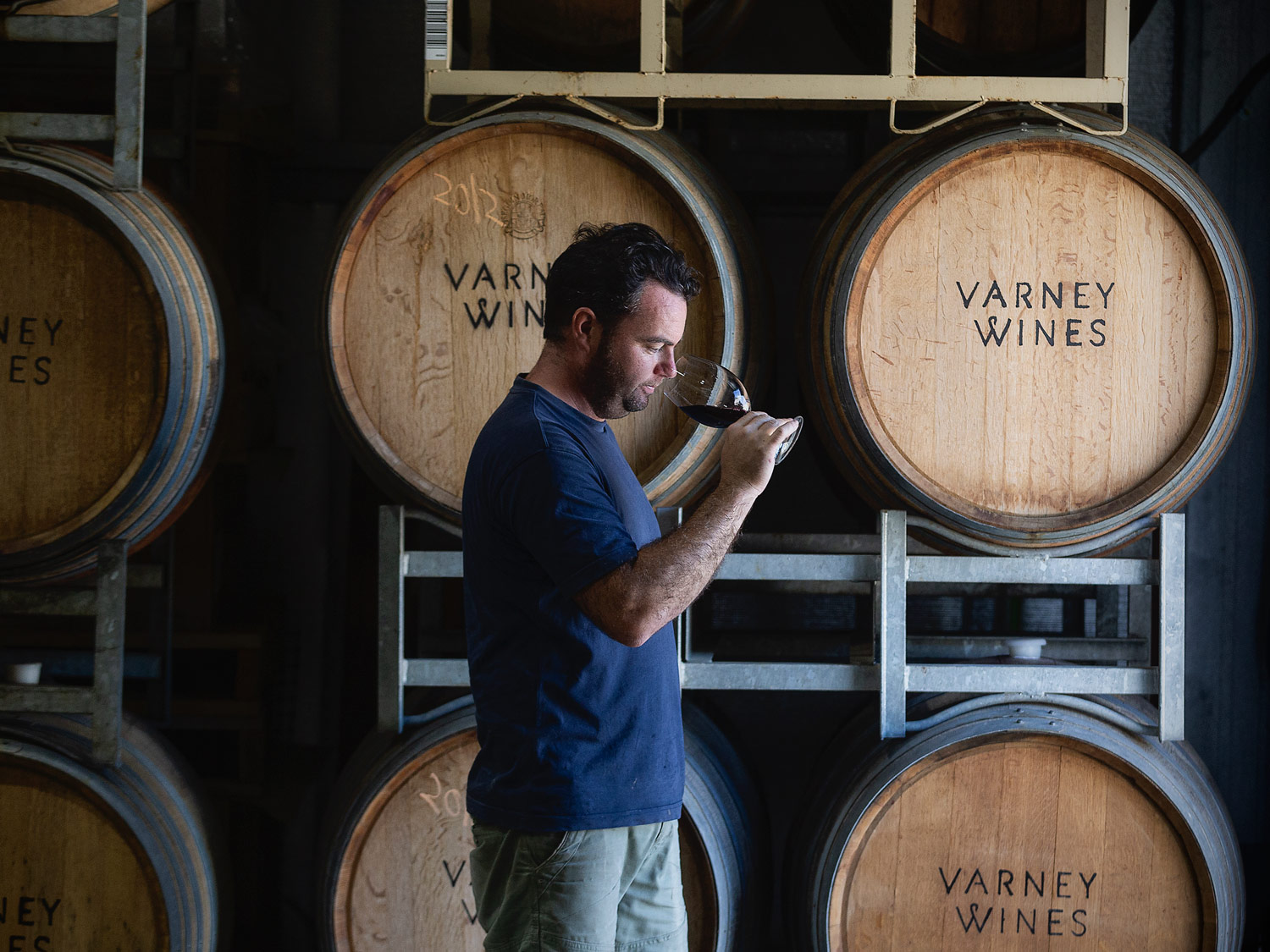Alan Varney’s journey has taken him from a childhood just outside of New York City around the world, eventually landing in McLaren Vale for a decade before settling down for good on the edge of Adelaide’s southern suburbs with McLaren Vale on his doorstep. His first solo wine was made with a tonne of fruit a decade or so ago, but it was from the 2017 vintage that he started to build a suite that would be released a couple of years later. Varney makes wine across four ranges, with some limited release and experimental wines, a pink gin, and the Entrada wines (bright everyday wines for the table) orbiting around the Essentials range, with classic and emerging varieties featuring. All the wines are pitched to feature variety and site at the fore, with only old oak employed.
“I’m an international mutt,” declares Varney. “Grew up in the States but came to Australia as an 18-year-old. Vintages in Portugal, California and New York State, together with over a decade in McLaren Vale working as a winemaker for d’Arenberg have shaped my winemaking ethos. I also have a degree from Melbourne Uni, but it’s the hours in various cellars where I learned how to make wine by touch and feel.”
Varney is at pains to point out that he has travelled extensively, so his affection for the regions he works on is far from parochial. “McLaren Vale and the Adelaide Hills are for me the leading regions in the country,” he says. “That’s why I’m here. The Vale is steeped in tradition but is incredibly open to new thinking. …The Hills are a hotbed of new-wave winemaking, and I love that it continues to challenge old-guard thinking.”
The winery was built by himself on “environmentally sensitive” principles and is situated in Noarlunga on the edge of Adelaide’s southern suburbs that fringe McLaren Vale. That location is somewhat the “gateway” to the Vale, with the winery built adjacent to an 1870s limestone barn that he and his wife Kathrin (who is originally from Berlin – they met while backpacking fresh out of school) purchased in 2015 in a derelict state and renovated to become their tasting room.
“To take the leap and launch your own wine label and build a winery, you need equal parts naivety and stubbornness,” notes Varney. “When I started, I had plenty of both. These days I’ve learned that they help at the start but hinder as you progress. In addition to those traits, you also need great people around you. I have plenty of them as well.”
Varney says that building the winery himself allowed for consideration to its environmental impact, with investments in solar, greywater, rainwater catchment and passive heating and cooling. And his approach in that building is centred on minimal to no inputs, with a low sulphur regime, extended time on lees, and he eschews fining and filtration. “My winemaking approach is to build structure and complexity from the fruit itself, so only older French oak is utilised,” he says.
“I use a lot of carbonic maceration, cold soaks, extended maceration, foot treading, headed down ferments, wild ferment, whole bunch and/or berry, and basically whatever I feel the fruit calls for. When winemakers get cocky, they often say that good wine makes itself. I think that’s rubbish. It takes a lot of planning, patience, persistence, and sweat to make good wine.”
The philosophy behind Varney’s wines is a simple one. “The only thing I truly live by is to always make the best wine you possibly can,” he says. “Many of my wines could be considered ‘natural’ wines, but I don’t want to be put in that camp, as I find it too restrictive. …Why limit yourself like that for an ideology? Start with great fruit, listen to it, guide it, and it should yield great wine. Keep doing that, and it will get the attention it deserves, regardless of how many rules you make (or break).”
Varney notes that the greatest challenge as a winemaker is when things don’t go according to plan. “Often, we pivot, and new wines are born,” he says. “My 2018 Semillon Fiano was one such wine that we never planned on until it hit the blending bench. It went on to charm some palates I have great respect for. Another wine that took courage was my 2019 Shiraz, which was never released. It just wasn’t good enough so caused some financial pain, but I’m not here to make average wine. End of story.”
The first own-label wines were released in 2019, with whites and a rosé from the year prior, and reds from ’17. The philosophy is the same today as it was with those first wines, with variety and site the heroes. “I source from just over a dozen individual growers throughout McLaren Vale and the Adelaide Hills. They all practice various forms of sustainable viticulture, ranging from biodynamic to fully accredited organics, through to ‘in-conversion’… They are a good snapshot of the industry’s adoption and move towards sustainable grape-growing.”
This push towards sustainable grape-growing – which is arguably no more progressive in this country than in McLaren Vale – and the adoption of emerging varieties that are suited to climate and soils has been responsible for increased fruit quality, Varney believes. “I have always maintained that you can’t polish a turd. It’s a crude but true reality… if you don’t start with top-quality fruit, you can’t make top quality wine. Simple.”
That forward thinking approach has been a huge benefit to local makers, with a range of emerging varieties now available that have changed the landscape for wine drinkers. “My mencía has been a huge success as an early drinking medium-bodied red,” Varney says. “Vermentino and touriga have likewise been revelations, and I hope to source some arinto this vintage. Working with these varieties also helps spread the vintage load across multiple varieties and stagger fruit intake into the winery.”
McLaren Vale and Adelaide Hills staples are still essential to the portfolio, with chardonnay, shiraz, grenache and mataro (mourvèdre) still featuring heavily, though Varney is tending to shiraz from the cooler Hills than its more usual home in the Vale. “The expression I was looking for was on the spicier, more aromatic end of the spectrum, whereas the Vale shiraz was lending itself much more readily to my GSM blend, with some attractive layering of fruit and weight… Is that an indication for me that the Vale is perhaps becoming less suited to this more traditional variety? Perhaps… but that opinion could ruffle some feathers!”
Less than five years in and knowing the challenges it has brought, Varney says that he “would truthfully be happy just knowing that I can still be doing this in five years’ time. By then, I would hope to perhaps have a cellar-hand to help clean some barrels and tanks! I’ll be continuing to refine my wines, which is of course a never-ending challenge. I’m also always keen to keep playing and experimenting with new varieties as they become available.”






